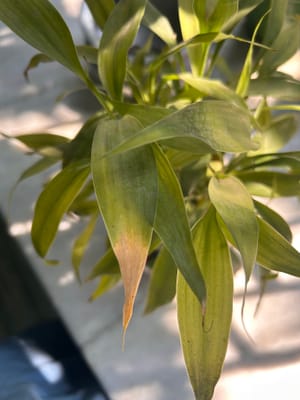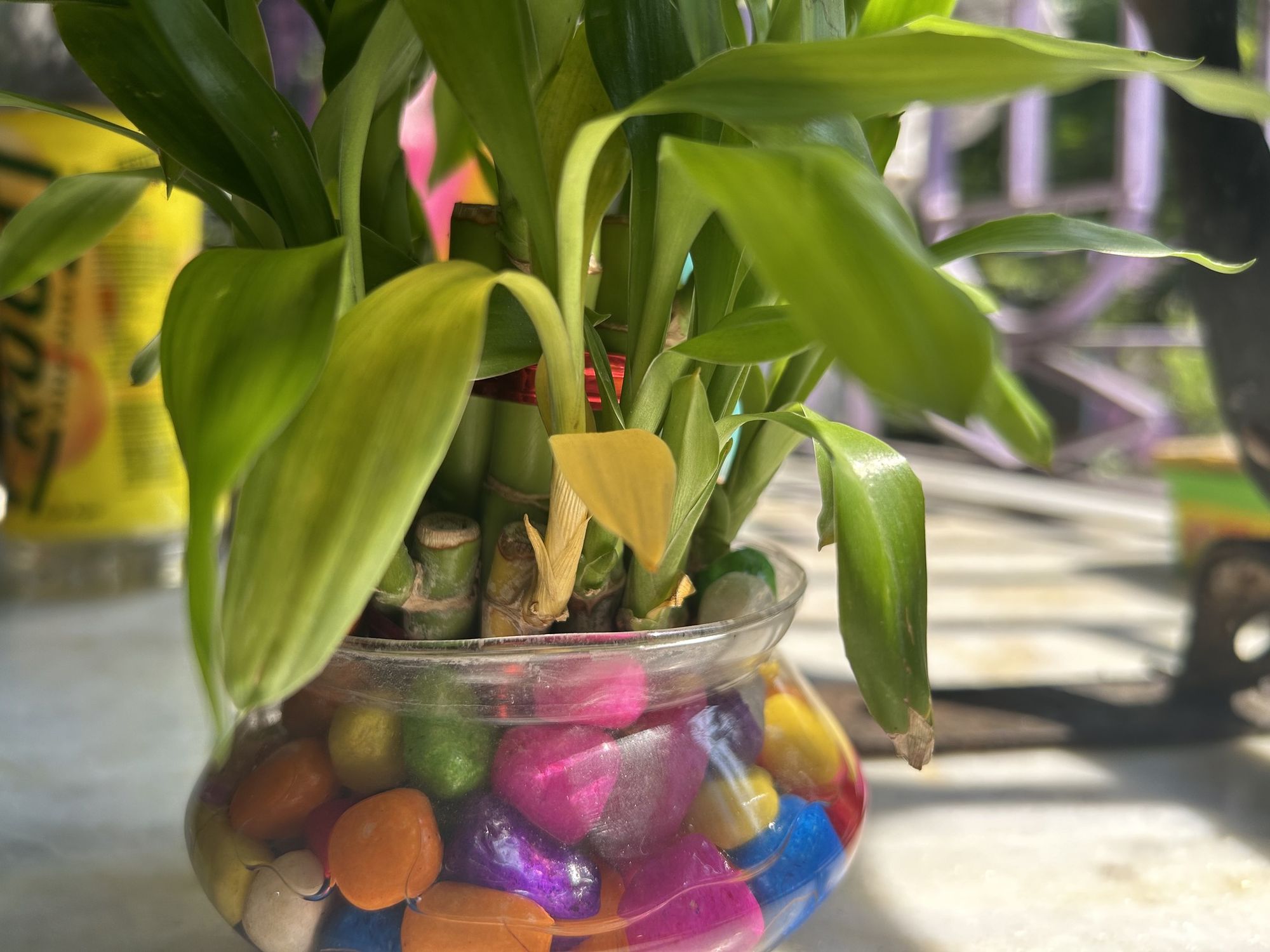
For the past two years, I've proudly displayed a lucky bamboo in my home workspace. I used to boast to my friends about how exceptionally healthy my bamboo was compared to others. Its dark green leaves and robust stems never failed to infuse me with energy during my work hours.
However, around two months ago, I noticed a change in my beloved bamboo. It all began with a single yellowish leaf catching my eye. As I examined further, I realized that one of the stems was gradually turning yellow as well. Even the roots, once a vibrant shade, had darkened considerably from their previous state.
In this article, I will share some common reasons for lucky bamboo turning yellow and what I did to revive my lucky bamboo.
Here is a picture of my yellow stem and leaves that I separated from other healthy stems.
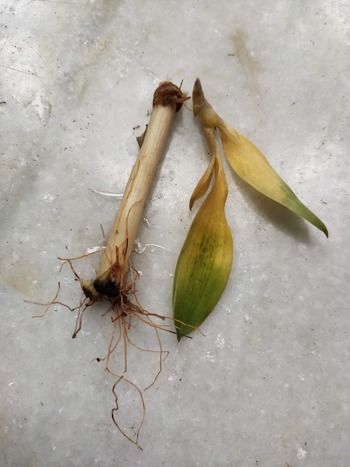
Common reasons that can make lucky bamboo turn yellow
If your lucky bamboo plant starts to turn yellow, the first thing you will notice is yellow leaves. As time goes on, you'll observe a change in the stem's color.
It's worth noting that if you have multiple stems of lucky bamboo in the same pot, only one stem might initially show signs of yellowing. Removing the affected stem from the pot may seem like a solution, but this approach is not effective in the long run. I have tried this before, but it won't prevent another lucky bamboo stem from turning yellow soon after.
If you need any kind of damaged leaf with a brown spot mixed with yellowish you can check: Lucky bamboo leaves turning brown and damaged
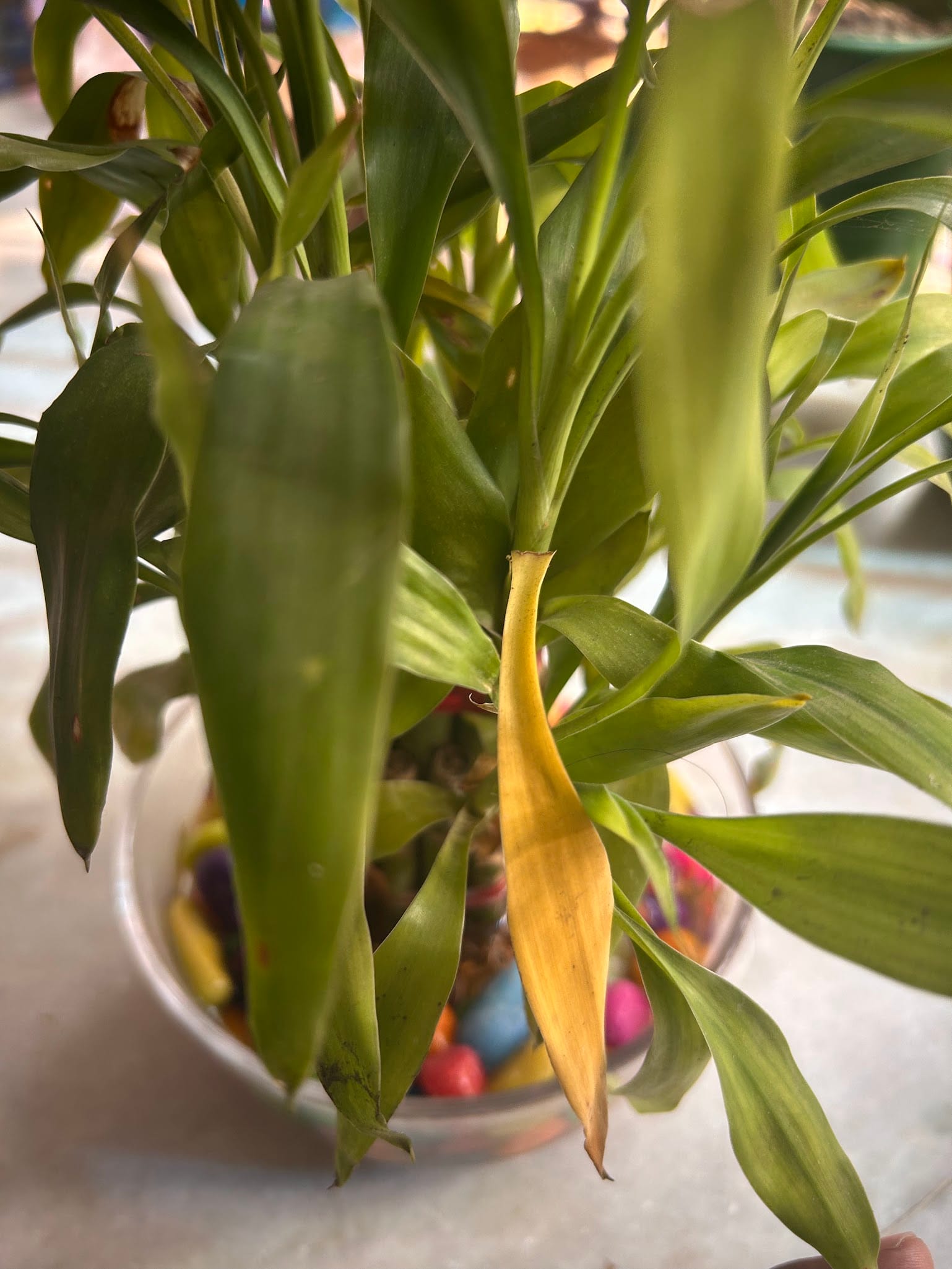
In the above image, the leaf has turned yellow due to the damage (broken) where the leaf stem is attached to the plant stem. As the plant can't transfer nutrients to the leaf, it turned yellow.
Having excessive sunlight is not good at all
Yes, having excessive sunlight is not good at all for the lucky bamboo. Lucky bamboo is not meant to grow in dark places, it needs light but not direct sunlight.
Make sure that you put your lucky bamboo in a place where it can get enough light but not direct sunlight.
An adequate amount of water is a must for lucky bamboo
If you submerge the bottom of this plant (roots) in the water, it will get enough water and will shine with dark green leaves. Remember, this plant needs a lot more water than other plants.
To verify this, I conducted an experiment by planting a lucky bamboo in the soil. The result was yellowing leaves, primarily because the soil dries out more rapidly and doesn't adequately meet the plant's high water requirements. For the best results, it's advisable to maintain the base of the plant submerged in water.
Maintain water quality
Always use filtered, bottled, or distilled water. Tap water or normal water may contain arsenic, iron, or chlorine. These types of components in water can cause yellowing of the leaves and stalks.
Over usage of fertilizer
I found this line printed on my liquid fertilizer for lucky bamboo
"CAUTION: too much fertilizer will turn leaves yellow"
What should I do if I find my lucky bamboo is turning yellow?
At first take a close look, if the yellow leaves are normal or not. Because due to aging every leaf will turn yellow one day. I found this very normal for each and every plant.
If that is not the case, then it's time to get worried.
I found something like this which is not normal:
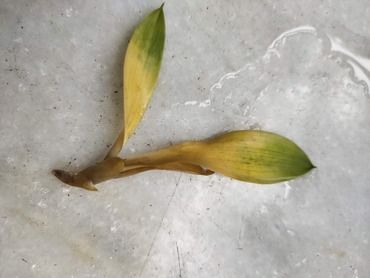
Follow these below steps to revive your yellow lucky bamboo
Begin by closely examining the yellow leaves on your lucky bamboo. Every yellow leaf you will find is not a thing to get worried about. Due to normal aging, it can be seen.
If the yellowing isn't due to natural aging, it's time to take action.
- Remove your lucky bamboo from its pot or container. Gently remove any stones present.
- Clean the stones with clean water and thoroughly wash the pot. Additionally, clean the plant with purified water.
- Prune the yellow leaves, and if you come across a rotted stem, carefully separate it from the healthy stems. You can also prune some of the rotted roots, but not excessively.
- Place the plant back in its original location with fresh, clean water. If you have a new pot, consider transferring the plant to it.
- If you use liquid fertilizer, be cautious not to exceed 4 drops every 10 days.
- Place the pot in a warm location (indoors) and make sure it is not exposed to direct sunlight.
Follow these steps, I hope your lucky bamboo should show signs of recovery within a few days.
What did I do to recover my yellowish luck bamboo?
In my case, I diligently followed the steps mentioned above, and I'm pleased to report that my lucky bamboo began to recover.
I also discovered black insects swimming in the water. Since my pot is made of glass, it was easier to spot these water insects. Upon identifying them, I opted to completely replace the pot.
These steps should help you nurse your yellowing lucky bamboo back to health, and addressing the presence of insects in the water is a wise choice.


